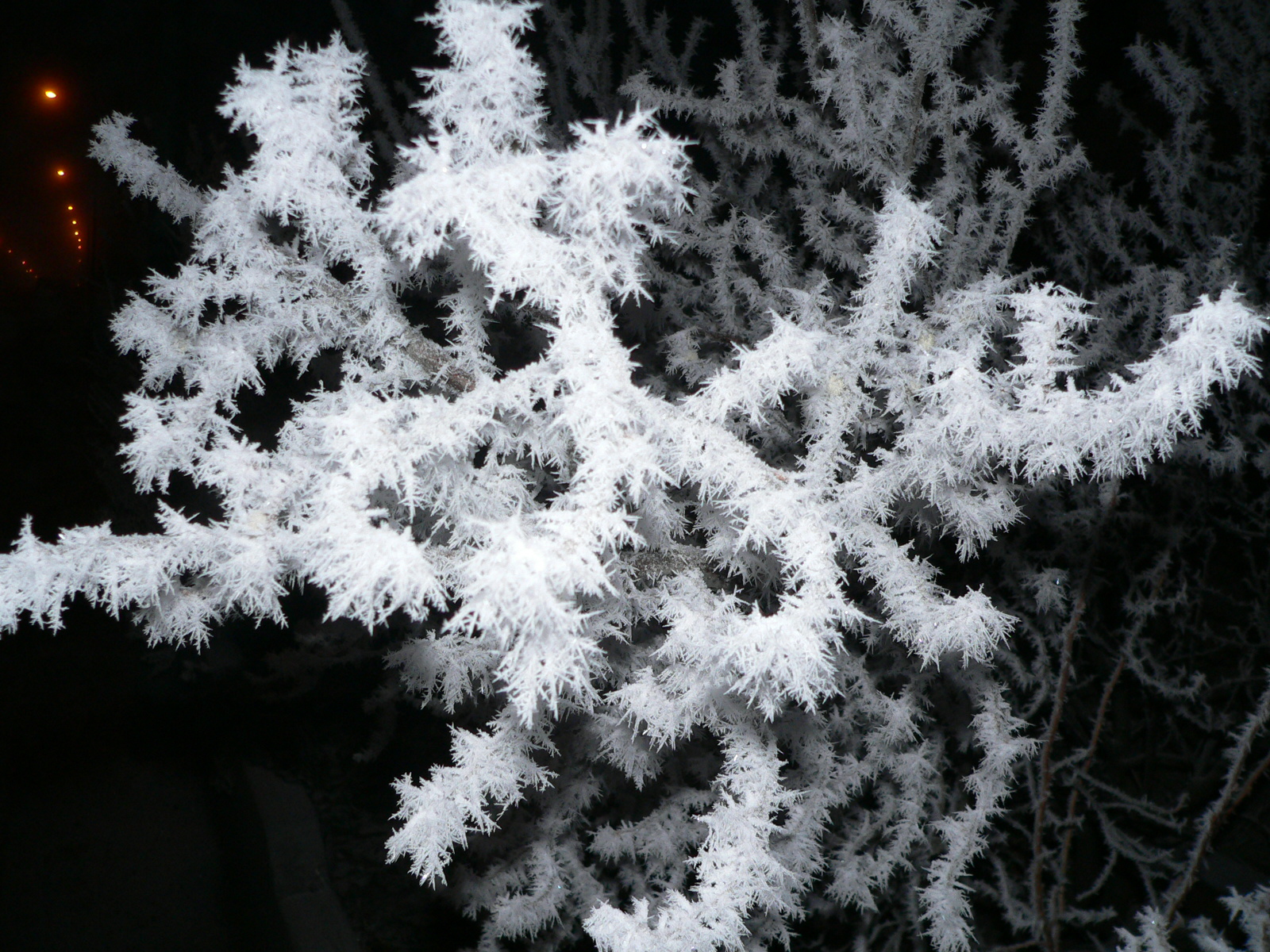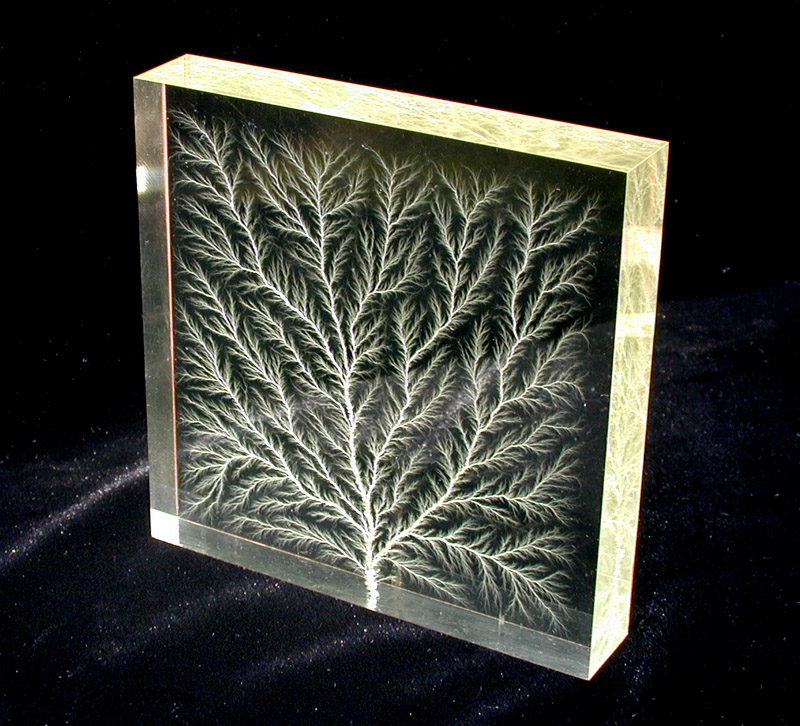Random surface growth
Note to teachers: This website is intended to give a brief introduction to physical models of random growth. It contains material that can be adapted to a one hour class session, and includes references to further reading as well as some exercises.
Introduction
Bacterial colonies growing in a petri dish, the height profile of snow falling down onto a cityscape, and deposition of atoms when building nano-electronics, are all examples of surfaces growing randomly, since there is no way to determine what part of the bacterial colony will start growing next, or what parts of the city will be covered deepest in snow.

Bacteria colonies grow in intricate, fractal patterns

Growth of ice crystals looks similar...

... and so does dielectric breakdown of plexiglass
Even though these processes are random, scientists are still interested in studying their properties, since the processes are important in nature and in applications such as creating catalysts for chemical experiments, or growing bacteria for penicillin. However, the questions that can be answered about these systems are different from other systems you might have encountered in physics before. Instead of asking questions like ‘‘where will the next bacteria show up in the colony?’’ (which we can't answer with certainty), physicists have been asking questions of the form ‘‘what is the most likely shape the colony will have when the number of bacteria in it becomes large?’’, or ‘‘how far away from a given bacteria are other bacteria affected by its presence?’’. These questions come from the field of statistical mechanics, which originated from the study of equilibrium properties of gases in the \(19\)th century. Recently, much attention has been devoted to using these tools in biology to study the cells in our bodies or collective behavior of animals in e.g. giant schools of fish. We will be exploring some of these topics on this website.
After having read through this website, you will be able to
give examples in nature of randomly growing surfaces
give examples of models describing this behavior
explain the concept of universality in physics
explain what fractals are, and how they can be found in nature
Further reading:
S.E. Gould, ‘‘The fractal patterns of bacterial colonies’’, https://blogs.scientificamerican.com/lab-rat/the-fractal-patterns-of-bacterial-colonies/.
Barabási, and Stanley, ‘‘Fractal concepts in surface growth’’, Cambridge university press, 1995.